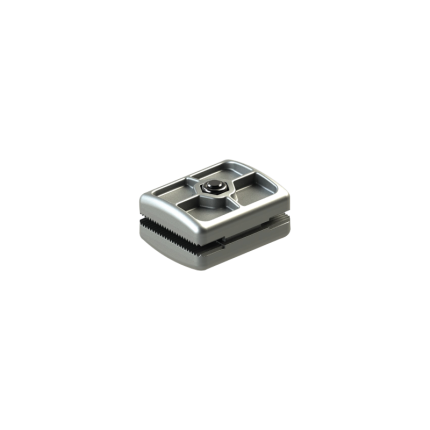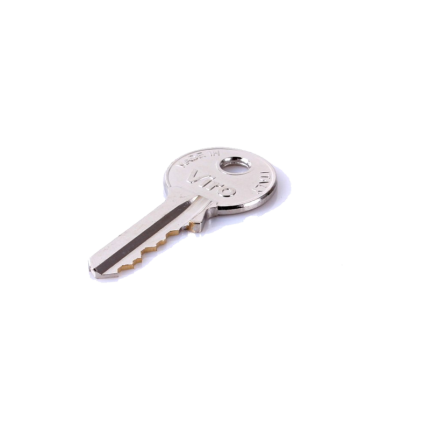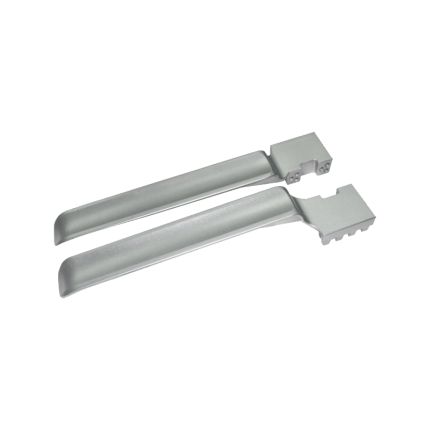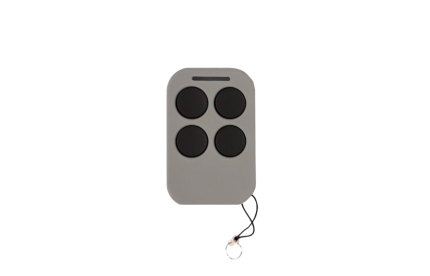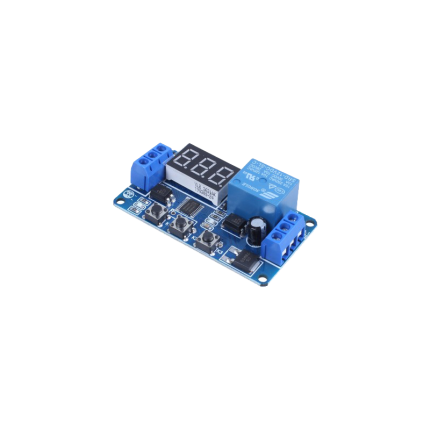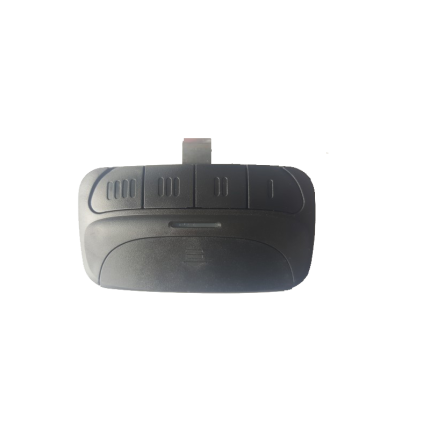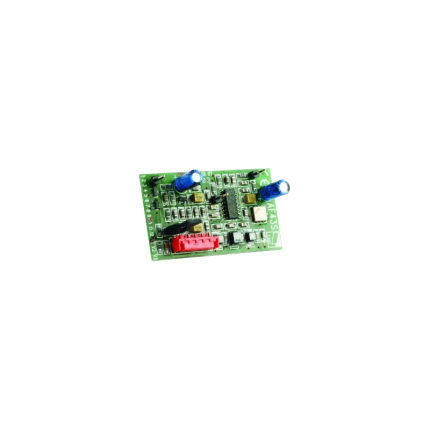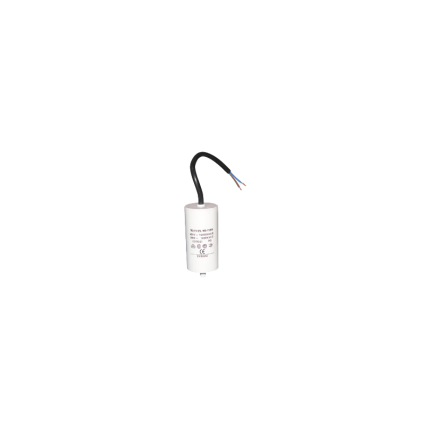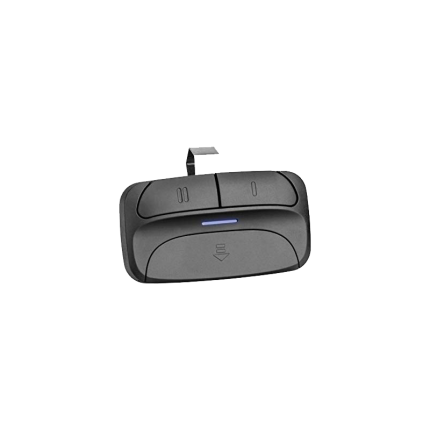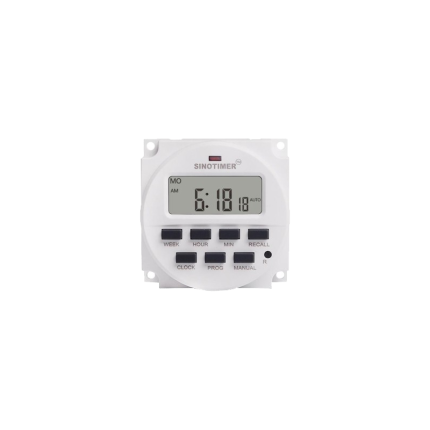Accessories
Swing gate operator -Physical stopper
Ship or pick up from our office.
Swing gate operator -Physical stopper
The swing gate opener physical stopper part that is located inside the gear-type swing gate operators. The swing gate operator physical stopper is adjustable, and it sets limits in the closing and opening cycle; it is set by the driveway gate opener's technician. The compatible swing gate openers are: *NICE *VDS *Key AutomationManual release key – Swing/Sliding gate openers
Ship or pick up from our office.
Manual release key – Swing/Sliding gate openers
A swing or sliding gate opener release key is a tool that allows you to manually operate a swing gate when the automatic opener is not functioning, such as during a power outage. It disengages the automatic mechanism, enabling the gate to be opened or closed manually.
Here's a more detailed explanation:
-
Purpose:The key is used to unlock the gate opener's motor, allowing it to be moved by hand.
-
Location:The release mechanism is often found near the gate motor, either on the motor itself or in a nearby housing.
-
Functionality:The key may turn a dial or lever that releases the motor's gears, enabling manual operation.
-
Importance:This manual release mechanism is essential for emergency access and situations where the automatic system is unavailable.
Sliding gate operator limit stopper bracket
Ship or pick up from our office.
Sliding gate operator limit stopper bracket
The gate operator system with a damaged limit stopper bracket can not work properly, and it will soon stop working. Most of the time, the main control board and the motor will be damaged because of this issue and have to be replaced. Sometimes errors come from the limit stopper bracket not working because they are damaged and needs only to be cleaned or readjustment. A sliding gate operator limit stopper bracket is a component that works with limit switches to prevent a sliding gate from over-extending its travel, ensuring it stops at the desired open and closed positions. These limit stopper brackets typically hold magnets or other sensor components that interact with the limit switches on the gate operator's control board. They help maintain the gate's smooth and safe operation by preventing it from hitting obstructions or going off its track. Here's a more detailed explanation: Purpose: The primary function of the limit stopper bracket is to define the boundaries of the gate's movement. It ensures the gate stops at the fully open and fully closed positions, preventing it from over-traveling. How it works: The bracket holds a magnetic or other type of sensor that is triggered when the gate reaches its limit. This trigger sends a signal to the gate operator's control board, which then stops the motor. Components: Bracket: The physical structure that holds the sensor. Sensor: A device (often a magnet) that interacts with the limit switch. Limit Switch: A switch on the gate operator's control board that is activated by the sensor. Importance: Safety: Prevents the gate from hitting objects or going off track, reducing the risk of damage or injury. Reliability: Ensures consistent and reliable gate operation by defining the travel limits. Protection: Protects the gate, operator, and surrounding objects from damage due to over-travel.Warning Flash Light
Ship or pick up from our office.
Warning Flash Light
A driveway gate warning flash light (also commonly called a flashing beacon or safety light) is a safety accessory for automatic driveway gates. Its primary purpose is to provide a clear visual signal to pedestrians, cyclists, and vehicles that the gate is in motion (opening or closing) or about to move. Why are they important? Automatic gates, especially large or fast-moving ones, can pose a safety hazard if their movement isn't clearly indicated. A warning flash light enhances safety by:- Alerting Pedestrians: People walking or cycling near the gate might not hear the gate opener motor, especially if there's ambient noise. A flashing light provides an immediate visual cue that the gate is active, encouraging them to stay clear.
- Warning Vehicles: Drivers approaching the driveway might not immediately notice a gate beginning to open or close, especially at night or in adverse weather conditions. The flashing light draws their attention to the gate's movement, preventing potential collisions.
- Visibility in Poor Conditions: In fog, rain, snow, or at night (all relevant for Surrey, BC's climate), the flashing light significantly improves the gate's visibility.
- Compliance with Safety Standards: While not always legally mandated for residential gates, many gate automation safety standards (and good practice) recommend or require warning lights, particularly for commercial or high-traffic gates. Installing one helps ensure a safer operation.
- Feedback to the User: For the gate owner, the flashing light also provides a visual confirmation that the gate has received the command and is indeed operating.
- Flashing Action: The light typically flashes intermittently (strobes) to maximize its attention-grabbing effect.
- Color: Most commonly amber (orange/yellow) or red, as these colors are universally recognized as warning signals.
- Power Source: Designed to be wired into the gate operator's control board. They typically operate on low voltage (e.g., 12V, 24V DC, or sometimes universal 12-265V AC/DC) provided by the gate opener's power supply.
- LED vs. Incandescent: Modern warning lights almost exclusively use LEDs (Light Emitting Diodes) because they are:
- More energy-efficient.
- Have a much longer lifespan.
- Are brighter and more visible than traditional incandescent bulbs.
- Weatherproof: As they are mounted outdoors, they are built to be weatherproof (e.g., IP54, IP65, or IP67 rated) to withstand rain, dust, and temperature variations.
- Integrated Antenna (Optional but common): Many modern warning lights include a built-in antenna for the gate's radio receiver. This can extend the range of remote controls, which is a practical dual function, especially for long driveways.
- Mounting: Designed for easy mounting on a post, wall, or the gate opener's column.
- Audible Alerts (Optional): Some advanced models may also include a small buzzer or chime to provide an audible warning in addition to the visual flash.
Gate Opener Remote Control -C4
Ship or pick up from our office.
Gate Opener Remote Control -C4
*433 MHz
*2-4 Buttons
*More than 10 different designs
Key features and functions of a gate opener remote control:
-
Remote Operation:Enables opening and closing the gate from a distance, typically within a certain range (e.g., 100 feet).
-
Radio Signal Transmission:Emits a radio signal to the gate's receiver unit, initiating the gate's movement.
-
Compatibility:Most remotes are compatible with specific gate openers and require the same frequency to function.
-
Programming:Can be programmed with the gate's receiver unit, often involving a "learn" or "program" button on the gate opener.
-
Multiple Remotes:Many gate openers can be paired with multiple remotes, allowing multiple users to control the gate.
-
Universal Remotes:Some universal remotes can be programmed to work with different gate opener brands, as long as they are compatible.
-
Safety Features:Some gate openers incorporate safety features like sensors that detect obstructions and reverse the gate's movement.
Gate Opener Remote Control
Gate Opener Remote Control 1400FT315
Ship or pick up from our office.
Gate Opener Remote Control 1400FT315
*High-Range 1400ft *315 MHz *Compatible with HomeLink system on vehicles *1 channelGate operator capacitor
Ship or pick up from our office.
Gate operator capacitor
A gate operator capacitor is an electrical component that assists the motor in a gate opener system to start and run smoothly.
It stores and releases electrical energy to provide the initial torque needed to get the motor going and to ensure consistent operation. These capacitors are crucial for both swing and sliding gate openers that are powered by AC.
Here's a more detailed explanation:
-
Starting the Motor:When a gate opener is activated, the motor needs a significant amount of power to begin rotating. The capacitor provides a burst of electrical energy to help the motor overcome its inertia and start moving.
-
Maintaining Smooth Operation:Once the motor is running, the capacitor helps to smooth out the electrical current, ensuring consistent and efficient operation. This prevents the motor from stalling or experiencing performance issues due to voltage fluctuations.
-
Types of Capacitors:Gate operator capacitors can be categorized as either start capacitors or run capacitors.
- Start capacitors: are used to provide the initial surge of power needed to get the motor rotating.
- Run capacitors: help to maintain consistent motor performance during operation.
- Start capacitors: are used to provide the initial surge of power needed to get the motor rotating.
-
Common Applications:Capacitors are used in various gate operator systems, including:
- Swing gate openers
- Sliding gate openers
- Commercial and residential gate systems
- Barrier arms
- Overhead doors
- Swing gate openers
-
Compatibility:Different gate operators may require specific types and sizes of capacitors, so it's important to choose the right replacement capacitor for your system.

